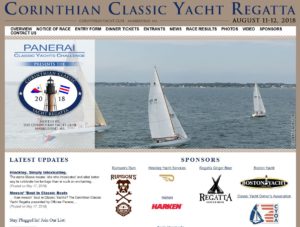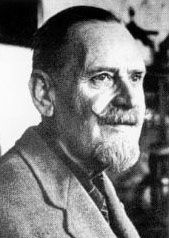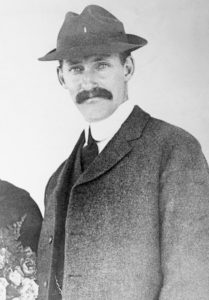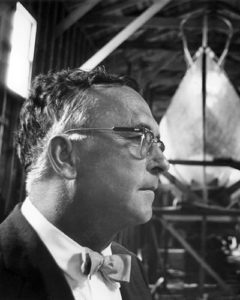
The Corinthian Classic tells great engineering tales, off the waters off Marblehead.
As this summer’s racing season gears up, and we consider the Mid-Coast Maine classic racing scene in another nearby post, an interesting naval design truth hit us: The biggest sailboat races almost go out of their way to deny their design legacies. Go look at the scratch sheets for the major events like the Newport Bermuda Race, the Chicago Yacht Club Race to Mackinac, and the TransPac, and can you find many sailing homages to the past that built these fleets? Probably not.
Certainly, most big regattas try to tell their stories in one form or another in race history pages and other Web essays. But in terms of active boats on the water that celebrate the past, few modern classics built on the principles pioneered by these races, are in these races. And considering that Spirit-of-Tradition vessels are as healthy a sector of the sailing world as any family of boats, can anybody explain why that is?
Because there is certainly no shortage of great design stories to tell about great yacht regattas. One example, is one of our favorite, if smaller, regattas: the Corinthian Classic Yacht Regatta, run out of Marblehead, Mass in early August.
This meet-up of classic, Spirit-of-Tradition and one designs openly celebrates the traditional design idioms explored in races of old. If you take a minute to listen for the breeze these stories make off the waters off Marblehead, we think you will want to listen yet more.
Once a Upon a Time In Marblehead …

Marblehead’s bad boy of yacht design: L. Francis Herreshof.
… Massachusetts, a true bad boy of naval engineering and design rolled into town: One L. Francis Herreshoff. L. Francis was the third son of Nathanael Greene Herreshoff, the so-called Wizard of Bristol. And while Captain Nat has long since been beautified as the singular saint of American yacht design, like many geniuses, he could be a cosmic jerk, cheapskate and selfish short-sighted businessman. Though the actual facts here are hazy — talking trash about Herreshoff the elder is never easy — it is clear that L. Francis relocated to Marblehead after his father essentially drove him out of Bristol and the family business at Herreshoff Manufacturing.
L. Francis quickly became a fixture in Marblehead, after he moved into what sure looks like a castle on a bluff overlooking the harbor. And a quick look at his design life shows the man had interesting ideas for boats. Daggerboards on big boats, hard boom vangs for dinghies and a sophisticated multihulls were some stand out ideas for l. Francic. And the current on the water vessels that carry his name are all classics: The Buzzards Bay 14, for example, is a favorite of our childhoods. It is the big-boy version of his dad’s H12-1/2. For those of use who used to camp and cruise in these 12 1/2 foot boy’s boats, we always secretly pined for those 2 extra feet.

Starling Burgess’ was another Marblehead innovator.
L. Francis Herreshoff was mentored by another brilliant Marblehead designer, Starling Burgess, who in many ways is the template for the careers we would like to have. He had an amazing influence in designing yachts, cars and even airplanes. He worked with Buckminster Fuller on the Dymaxion Car. He licensed aircraft to the Wright Brothers. (Think about that for a second: Burgess got hired by the dudes who invented flying to design a plane?) Of course, when Burgess partnered with Olin Stephens, the two would create probably the ultimate J-boat , Ranger. That’s the J-Boat where the owner — Harold Vanderbilt — drove and won the America’s Cup. There is no greater testament to good design than that.
Marblehead’s design legacy has made some of our day’s best designers also feel at home. Our favorites are Doug Zurn and Jim Taylor. Let’s just say that if we only admired their work, and were never jealous of it, that we would be sort of lying.
A Floating Ode To Ray Hunt
But probably the most influential designer from these waters is C, Raymond Hunt. A tremendously versatile yacht creator who had a genius for crafting simple, yet iconic vessels. He drew the Concordia yawl, to the first Boston Whaler. He also essentially invented the the deep-vee powerboat hull, that all fast powerboats now mimic. Hunt also gave the America’s Cup a run for its money. He drew Easterner, a 12-meter that contended for the America’s Cup in ’58. And the man also had a twisted sense of sailing fun. He drew several borderline day sailors, including the 14 foot “Brutal Beast’ and the International 110. Oh heavens.

Marblehead’s Ray Hunt drew Boston Whalers, America’s Cup boats and invented the deep vee hull.
So there you have it. When you shape up for this year’s Corinthian Classic in early August, you now know the good stories to listen for, as they whistle in over Marblehead Harbor.
The past is always present for any sailor.